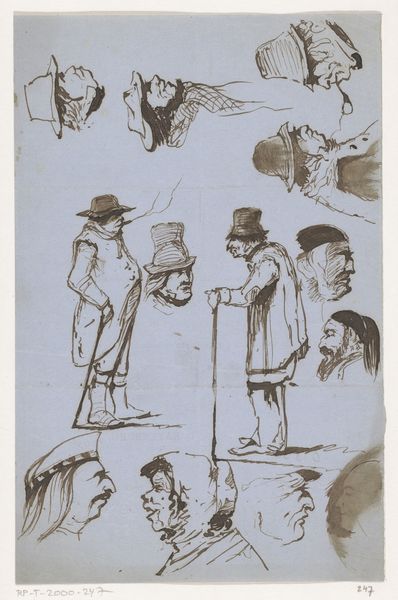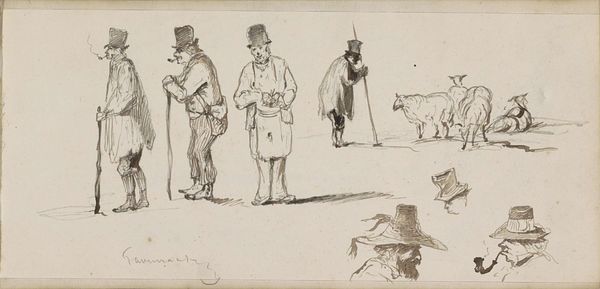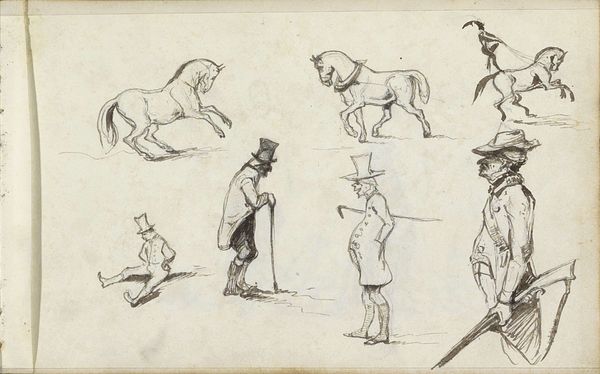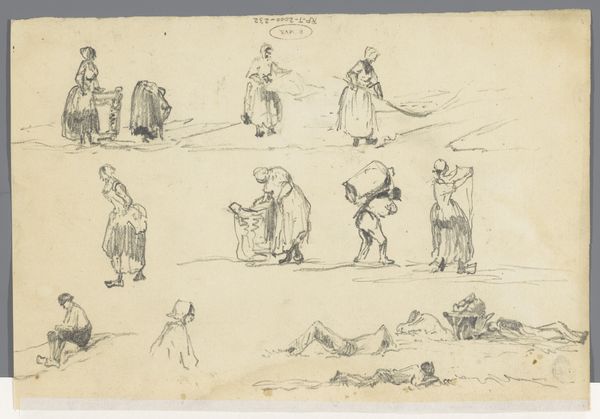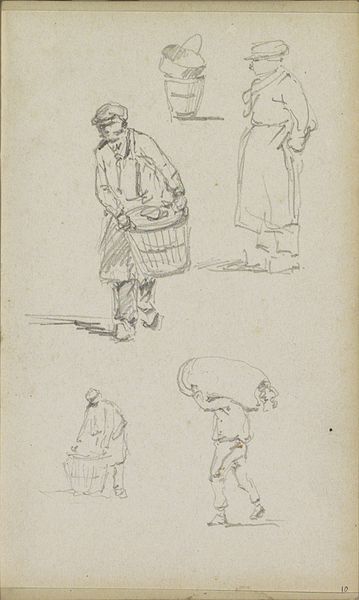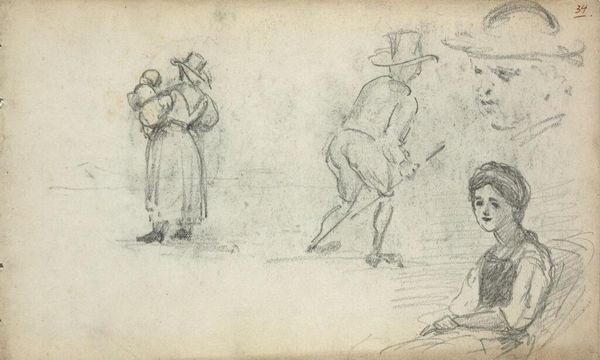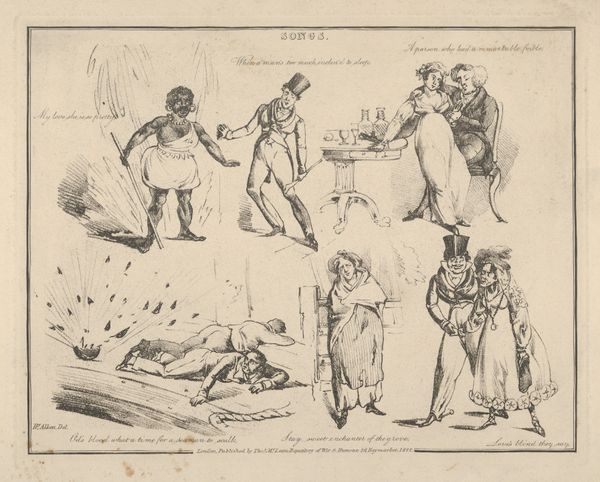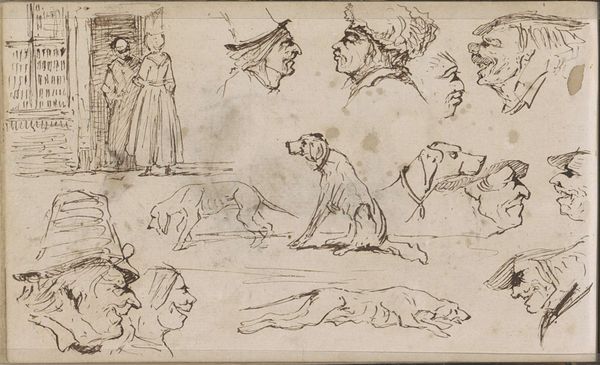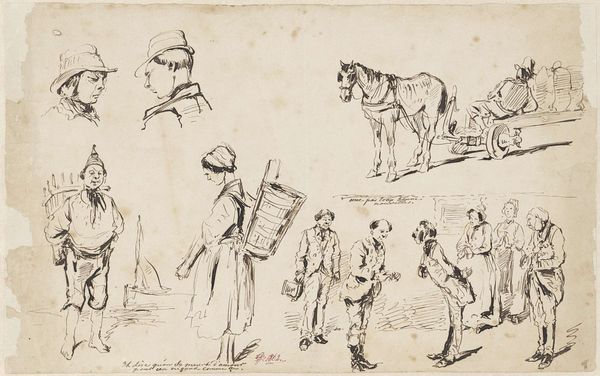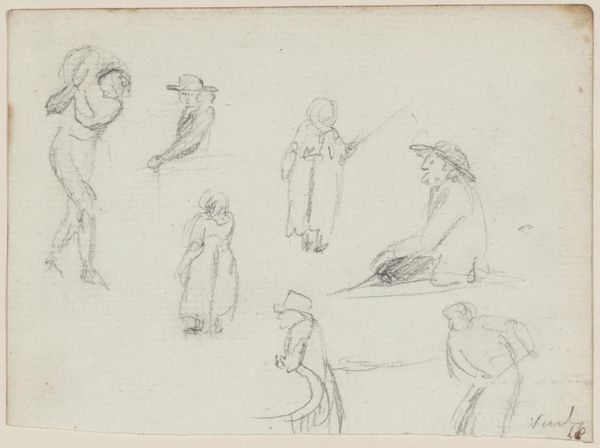
drawing, paper, ink, pencil
#
portrait
#
drawing
#
dutch-golden-age
#
impressionism
#
dog
#
landscape
#
figuration
#
paper
#
ink
#
pencil
#
genre-painting
Copyright: Rijks Museum: Open Domain
Editor: So, here we have "Dog and Figure Studies," a drawing by Johannes Tavenraat from between 1864 and 1880, using pencil and ink on paper. It gives off this very casual, sketch-book feel... almost like a quick snapshot of everyday life. What social context can we draw from these studies? Curator: Exactly! This "snapshot" wasn't about perfectly rendering reality, but about capturing fleeting moments. Think about the burgeoning industrial revolution during this period. With increasing urbanization and changing social structures, artists became more interested in portraying contemporary life and everyday activities. What do you notice about the people depicted here? Editor: Well, their clothes seem to represent different social classes. I see a woman carrying what looks like a water container on her head, then another figure in a tall hat. Were artists like Tavenraat trying to document the various layers of society? Curator: Precisely. Artists used sketchbooks to study and document the people around them in society. These studies were very functional. How would you say Tavenraat is positioned as the artist, within Dutch society? Editor: Considering that they are drawn in sketch style, I see the figures not as portraits but as quick observations from daily life, from the eyes of an active participant of society, similar to how we use photographs today. The fact that it's in a museum today raises interesting questions about value. Curator: I'm glad you mention that. The art market certainly influences what survives and how it's valued today. Even casual sketches can offer deep insights into the social and economic hierarchies. It allows us to reconsider not just art, but the lens through which it is valued in different political climates. Editor: This was extremely helpful. The discussion about the value of daily records, such as sketches, gives me an entirely new perspective of what museums choose to exhibit and display. Curator: Likewise, it’s insightful to witness art reflecting society back at us, reminding us of our shared yet varied experience.
Comments
No comments
Be the first to comment and join the conversation on the ultimate creative platform.

